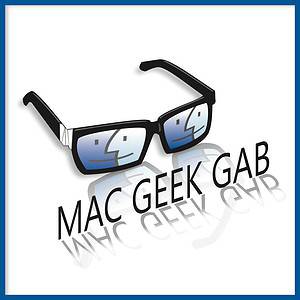MGG 613: Deep Dives Into APFS, Synology, Powerline & More
Dave’s traveling, so when he and John pre-recorded this one they decided to take a bit of a different direction and do a bit of a deep dive into one of their favorite topics: Synology DiskStations. But don’t worry, they also answered a few of your questions and shared a couple tips. It’s still your two favorite geeks, after all!
Sponsors
Sponsor: Gazelle is the fast and easy way to get cash for your used iPhone, iPad, and more. Sell your used Apple products at Gazelle.com and make it easier to trade up to the latest devices!
Show Notes
Note: Shownotes are complete! Stuff mentioned:- FLING’s Bovine Abduction (1:18)
- Use Time Machine to back up or restore your Mac (3:16)
- Cyclic Redundancy Check (CRC)
- Carbon Copy Cloner - Advanced Settings - Find and Replace Corrupted Files
- Introducing Apple File System (WWDC 2016 Video)
- Introduction to Apple File System (APFS)
- APFS Links
- A ZFS developer’s analysis of the good and bad in Apple’s new APFS file system
- Synology
- Synology Hybrid RAID
- RAID Levels
- Synology Multimedia (Audio, Video, Photo)
- Link Aggregation
- OS X El Capitan: Combine Ethernet ports
- Plex Media Server
- Synology Dynamic Domain Name Service (DDNS)
- Synology VPN Server
- OpenVPN Connect (iOS)
- Tunnelblick (OS X OpenVPN Client)
- Crashplan
- Notes gets sharing in iOS 10 (and macOS Sierra)
- Solwise PL-1200 AV2 HomePlug Powerline Adapter (1:09:49)
- ActionTec ECB6200 Bonded MoCA 2.0 Network Adapter
- Actiontec Bonded MoCA 2.0 Ethernet to Coax Adapter, 2 Pack (Amazon)
- The Mac Geek Gab iPhone app
- You're downloading today's show from CacheFly's network
- BackBeat Media Podcast Network
- MacGeekGab AAC Enhanced Feed - Thanks to Michael Johnston of The iOS Show and Applr.

I really enjoyed this podcast very much. Great job, guys.
I did want to add 1 thought onto your comments about NAS, in this case the Synology devices.
Everyone assumes if they use Mirror mode (1 drive is automatically copied onto a 2 drive so you automatically get a back up) only helps when drive A fails, and drive B kicks in so you don’t lose any data.
What most users don’t understand is that there are multiple single points of failure, even in a NAS as configured above! Yes, it is true that a drive is the most likely part to fail, due to the nature of spinning hard drives. However, other things can go wrong that may not “destroy” your data, but certainly make it unavailable. For example:
1) If the Ethernet port fails (if signal port unit).
2) If the power supply fails.
3) If the disk controller or CPU fails.
In all three of these scenarios, the data and the drives might be perfectly ok, but you still will not be able to get to your data, because other hardware that sits in between you and your disks has failed. And, while replacing a power supply might be easy to diagnose and fix, most typical users will experience significant downtime if the other items fail.
Lesson; Buy quality in your NAS. Don’t cheap out.
Lesson: Work with a NAS vendor that can supply you with a new power supply and / or case (ethernet and controller hardware) in short order to get you back up and running sooner rather than later.